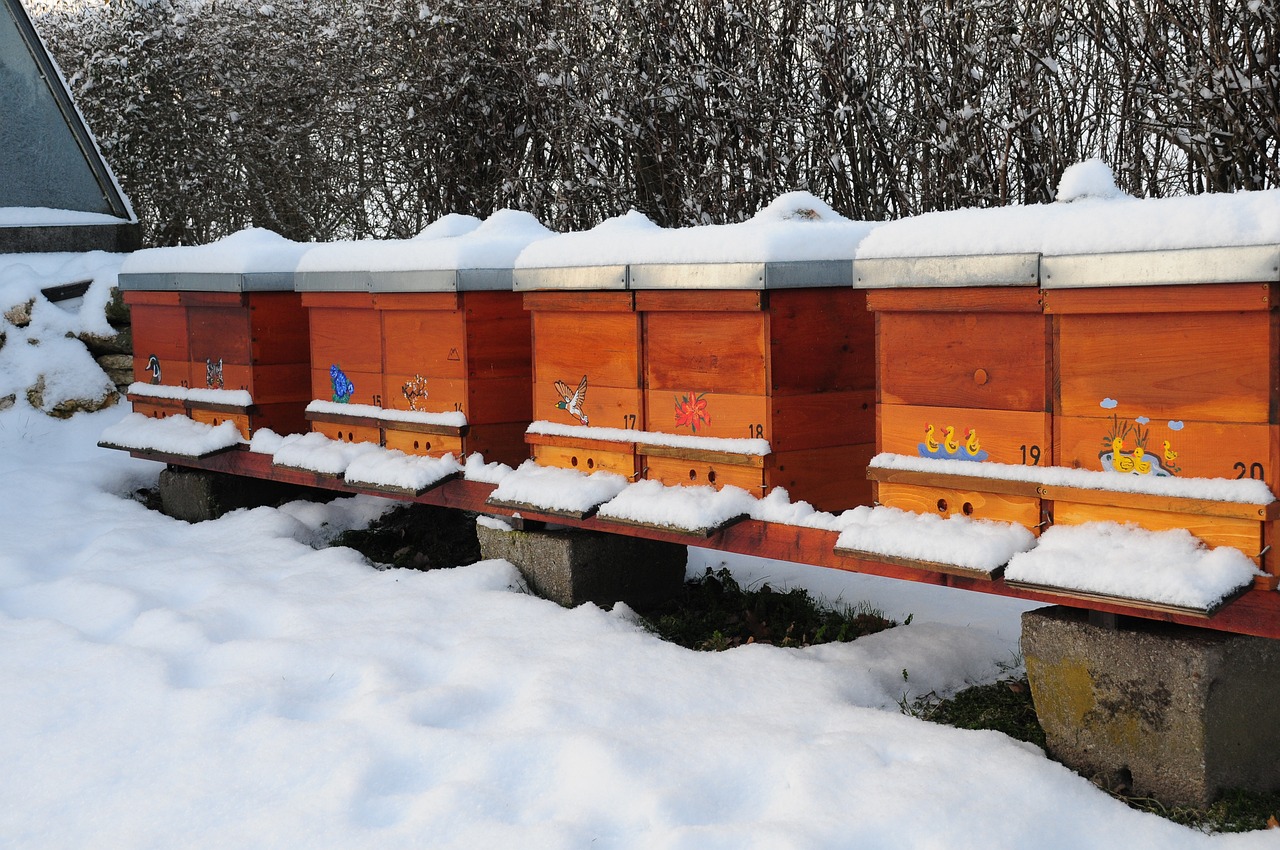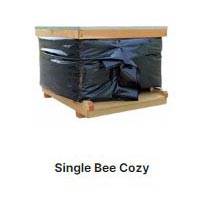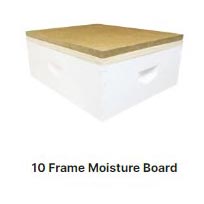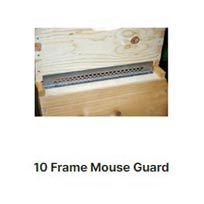Should You Open Your Hive Mid-Winter?
Many beekeepers often wonder about opening their hives during winter. While conventional wisdom advises against such interventions during the cold season, there's a range of perspectives on this topic.
Some emphasize the risks of disturbing the hive's winter cluster, while others argue for occasional checks to prevent issues like moisture buildup or starvation.
In this debate, master beekeeper Frank Licata provides valuable guidance and tips to help you decide, along with what to know if you do.
Increase Survival with Wintertime Preparation
Once you've prepared your colony for winter with insulating bee cozies, moisture control, and mouse guards, there's a temptation to keep the hives closed until spring. Unfortunately, if your bees don't have enough stores, they can end up starving. Assessing the honey stores and the overall health of the colony ensures they have sufficient resources to endure the cold season.
Consider supplementary feeding if honey stores are low. A sugar syrup or fondant can provide essential energy when natural sources are scarce. Ensuring proper ventilation can help prevent condensation buildup within the hive, which can be detrimental to the bees' health during the cold months.
External Check
Frank recommends a simple yet effective way to monitor your bee colony's winter preparedness. As fall sets in, you should go to the rear of your hive and gently lift it to gauge its weight. This helps estimate the bees' winter stores without opening the hive.
Continuing this method into winter can indicate if resources are running low, offering a chance to support your bees before spring. It's a quick way to assess your bees' condition and available reserves.
Developing this skill requires practice, but it becomes easier to judge by experience over time. The goal is to minimize hive disturbances, and this method is the first step in determining if opening the hive is necessary.
| Did You Know: The winter cluster inside a hive can maintain temperatures up to 95°F, despite freezing external conditions. This remarkable thermal regulation emphasizes the need for minimal disturbance during winter checks. |
Timing
If you suspect that your bees need extra feed or further inspection, the next step is to carefully inspect the hive. In northeastern Pennsylvania, where winters can be cold and brutal, Frank likes to check on the hives in late February or March.
This timing, about four to six weeks before the expected spring warm-up, helps ensure the bees haven't used up their stores before winter's end. With the cold temperatures at this time, you don’t want to pull frames out and chill the brood that the queen is starting to raise.
Your goal should be to quickly assess feed levels while preserving the hive's warmth. Try to perform a hive inspection on a day that's warmer than the typical winter cold to reduce stress on the bees. In northern regions, this may be when the temperature is 30–35°F.
Checking the Hive
To begin the process, take off the inner cover by lifting one edge and looking underneath. Then, evaluate if your bees have enough feed.
If you notice the bees clustered at the top of the frames, it's a clear sign they've run out of feed. At this point, you should add a winter-optimized feed, like Pro-Winter Patties, to help them last through the cold.
If your bees are still down below between the frames and you can hear them, they're likely doing fine. In this case, you’ll see capped honey, indicating they have sufficient feed and don't need extra. With enough feed, you can simply replace the cover.
Winter Feeding
When it's time to add the feed, Frank suggests using an appropriate winter cover for your hive. You can use either an 8-frame winter cover or 10-frame winter cover to fit your hive. It’s easy to install and is placed right on top of the hive, above the top bars, and below the top cover.
Frank’s approach involves laying the feed right on the top bars. After positioning the feed, he covers it with the winter cover and then finally places the top cover back on. This will provide the bees with the sustenance they need to survive until spring.

Emergency Winter Feeding Techniques
When winter grips the hive, and your bees’ stores are perilously low, emergency feeding becomes crucial to their survival. Here’s how to provide that lifeline without causing undue stress to your colony.
Sugar Bricks
A simple yet effective solution, sugar bricks can be a lifesaver for your bees. Mix white sugar with just enough water to hold it together, press the mixture into a mold or form it into bricks, and allow it to dry. Once solid, these bricks can be placed directly above the bees' cluster. The minimal moisture content helps avoid adding unwanted humidity inside the hive.
Candy Boards
Similar to sugar bricks, candy boards offer a more controlled way to feed your bees. By pouring a thick sugar syrup into a framed board that fits your hive and allowing it to harden, you create a large, flat feed source. Positioning the board above the brood chamber gives your bees easy access to this emergency ration without forcing them to break the cluster.
Fondant
Beekeepers often turn to fondant for its ease of use and because it’s less messy than liquid feedings. Ready-made or homemade, fondant can be laid close to the cluster, providing an immediate food source. Its soft consistency is ideal for cold weather, making it easier for bees to consume without expending precious energy.
| Bee Insight: Bees prefer to consume their honey reserves before accepting supplemental feeds. Positioning emergency food close to the cluster encourages use only when necessary. |
Winter Hive Insulation Options
Proper insulation helps maintain stable temperatures, reducing the need to frequently open the hive for checks. This table offers a quick comparison to guide your insulation choices, directly impacting your winter beekeeping success.
| Material | R-value | Durability | Installation |
| Foam Insulation | High | High | Easy |
| Reflective Bubble | Moderate | High | Very easy |
| Natural Wool | High | Moderate | Moderate |
| Straw Wraps | Moderate | Low | Easy |
Frequently Asked Questions
Navigating the winter season requires unique care for honey bees. These FAQs address crucial yet often overlooked aspects of winter beekeeping, offering insights into how to keep your bees alive, healthy, and ready to thrive come spring.
Why am I seeing dead bees outside the hive entrance in winter?
Finding dead bees outside the hive entrance during winter is normal. Honey bees will remove all the dead bees from the hive as part of their hygiene routine. This ensures the hive stays clean and reduces disease risk.
How do honey bees keep their brood warm in cold climates?
Honey bees cluster around the brood nest, vibrating their wing muscles to generate heat. This behavior keeps the brood warm, even in the coldest winter weather.
What is the role of fat winter bees in the hive?
Fat winter bees, developed in late fall, are crucial for winter survival. They have larger fat bodies, which are essential for insulation and producing heat to keep the bees alive and the brood warm throughout the winter season.
How much honey do bees need to survive the winter?
The amount of honey needed varies by climate but generally, a hive may need between 60 to 90 pounds of honey. This ensures that honey bees have enough food to maintain energy and keep the colony alive during winter when foraging is not possible.
What happens if I don't see any worker bees at the hive entrance during winter?
Not seeing worker bees at the hive entrance in winter is often normal, especially in cold climates. Bees cluster inside to keep the hive and brood warm, reducing entrance activity to conserve energy.
Can feeding bee bread help maintain a healthy bee colony in winter?
Bee bread is stored pollen and is essential for bee nutrition, especially in early spring for brood rearing. While bees primarily consume honey in winter, having bee bread reserves helps ensure the colony emerges healthy and can start expanding the brood nest as soon as weather permits.
How do bees manage ventilation in winter to prevent moisture buildup?
Bees intelligently regulate the hive entrance and use propolis to adjust ventilation gaps. This careful management helps prevent moisture buildup, which is vital for keeping winter bees and the brood nest dry and warm.
What are the signs of a thriving colony ready for winter?
A thriving colony will have a strong population of winter bees, ample stores of honey and bee bread, a healthy brood pattern going into the cold months, and minimal signs of disease or pests.
Is it normal to find all the dead bees in the hive after winter?
Finding some dead bees in the hive after winter is normal, as not all bees survive the harsh conditions. However, a large number of dead bees can indicate issues such as starvation, disease, or insufficient winter preparations.
How can I ensure my brood box is ready for winter?
Ensuring the brood box is ready for winter involves confirming there's enough honey and bee bread stored, the presence of fat winter bees to maintain heat, and that the hive structure is secure and well-insulated against winter weather.

Conclusion
A brief inspection of your hive this winter can be the critical difference between a struggling colony and a flourishing one come spring. Ensuring your bees have sufficient feed not only aids their survival through the cold months but also sets the foundation for a thriving colony ready to capitalize on the first bloom. In the world of beekeeping, a few mindful minutes in winter pave the way for success in the seasons ahead.




